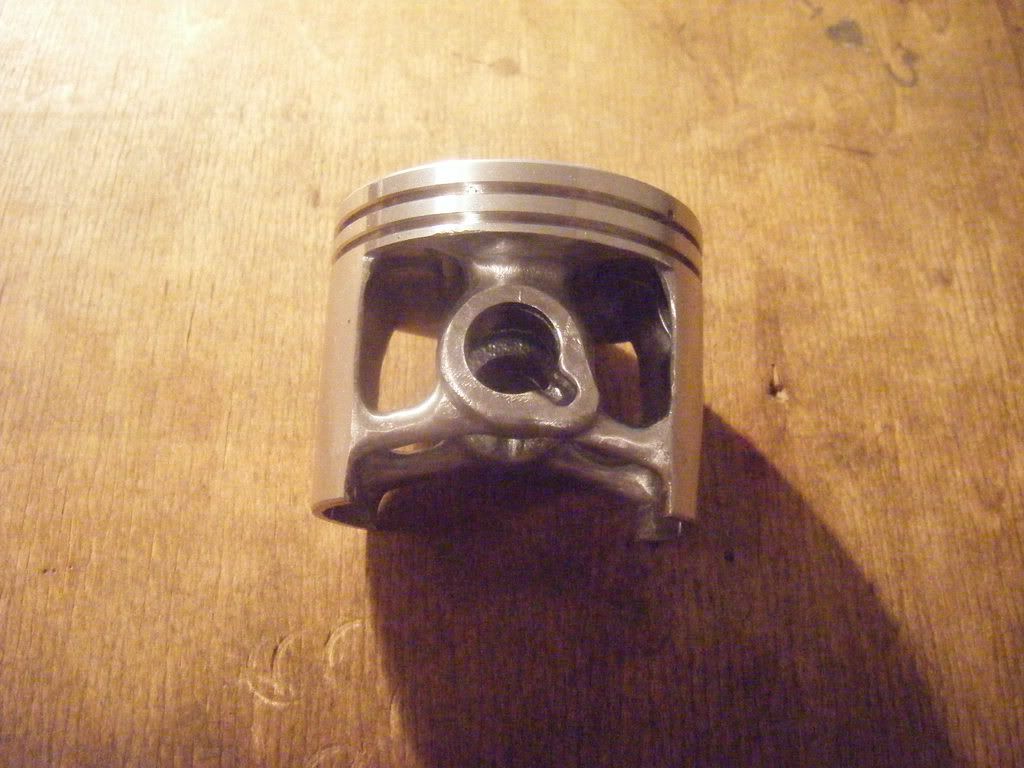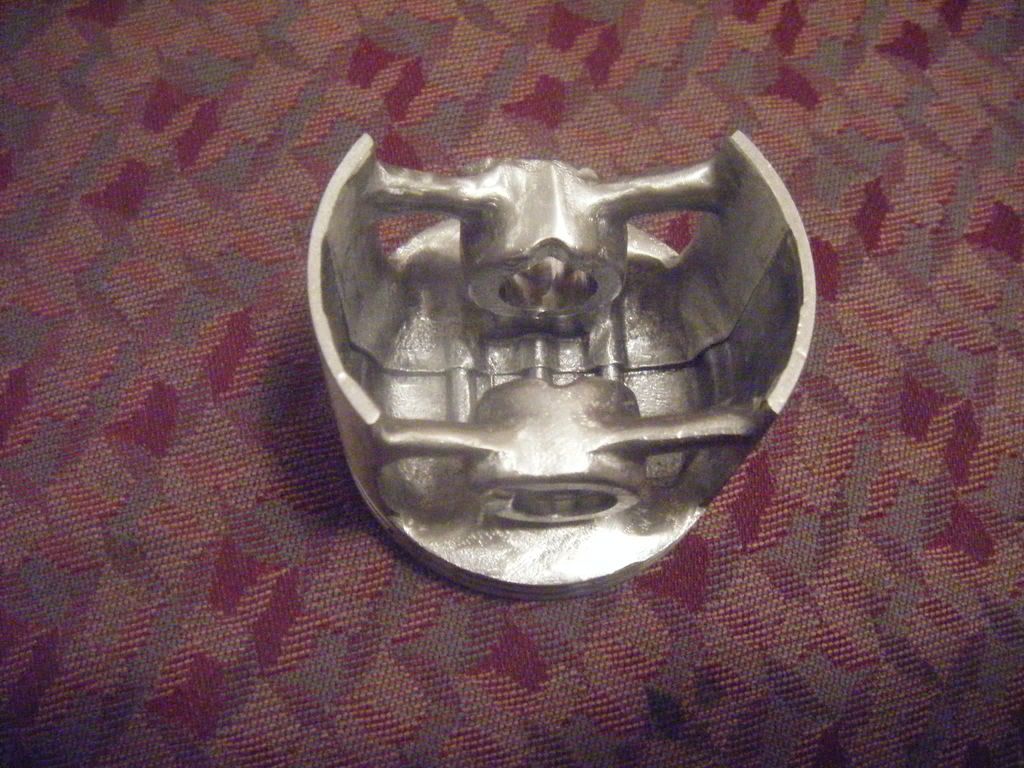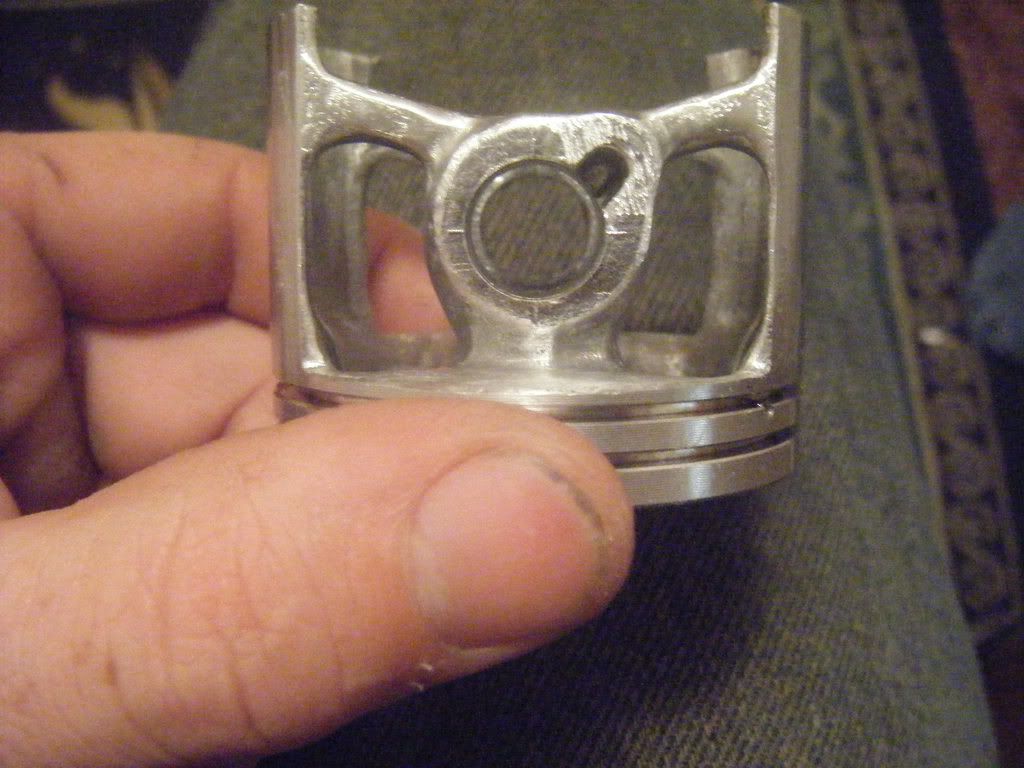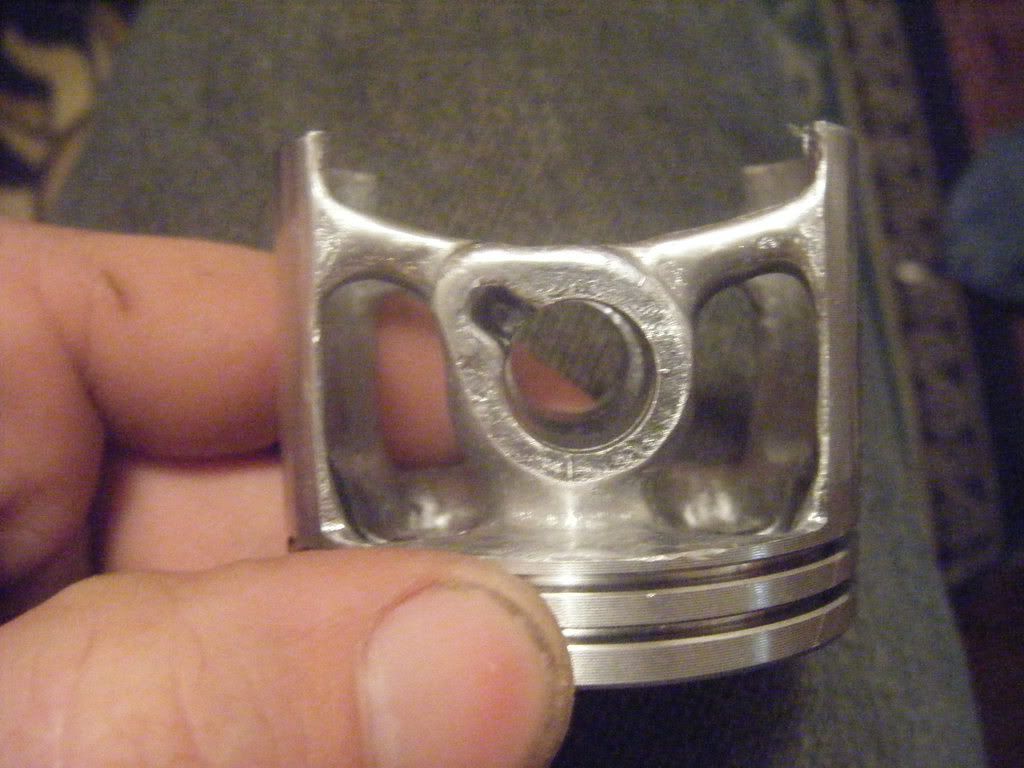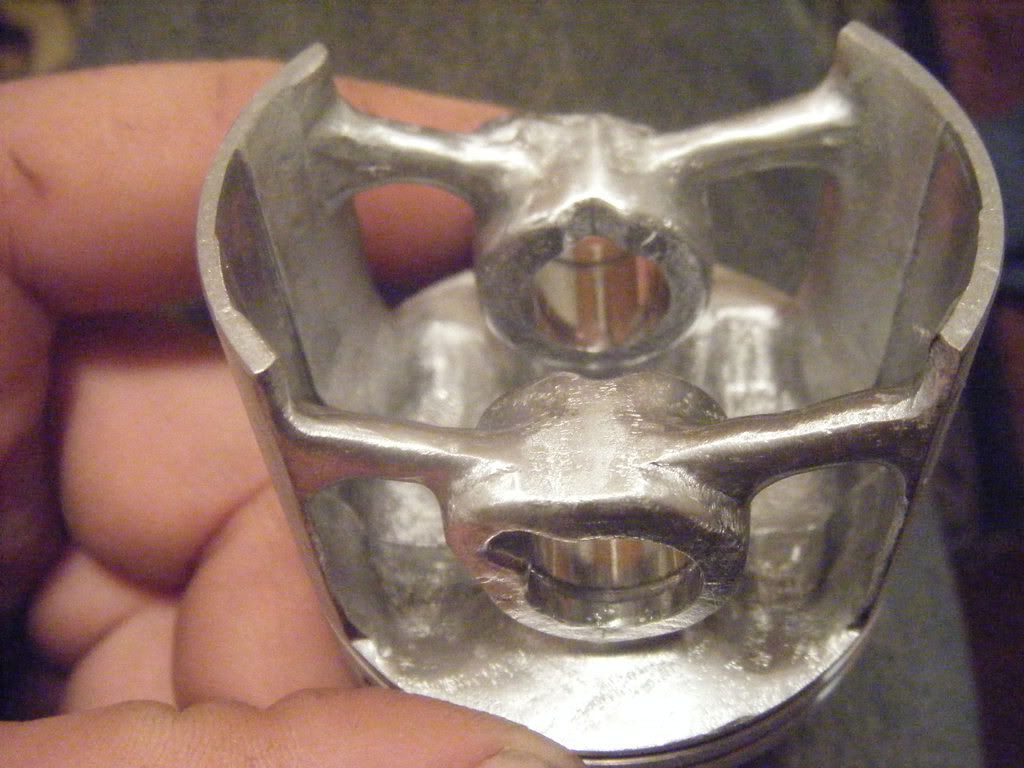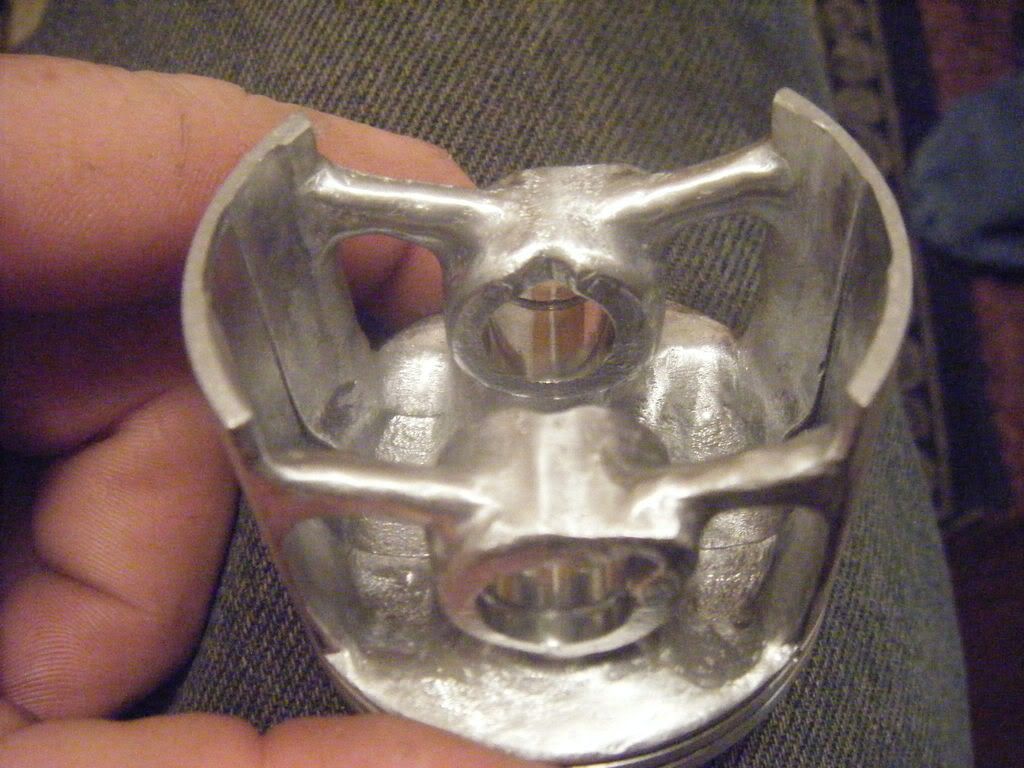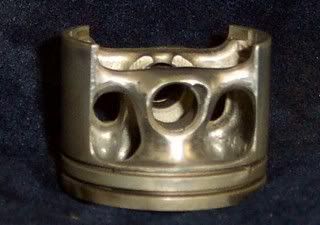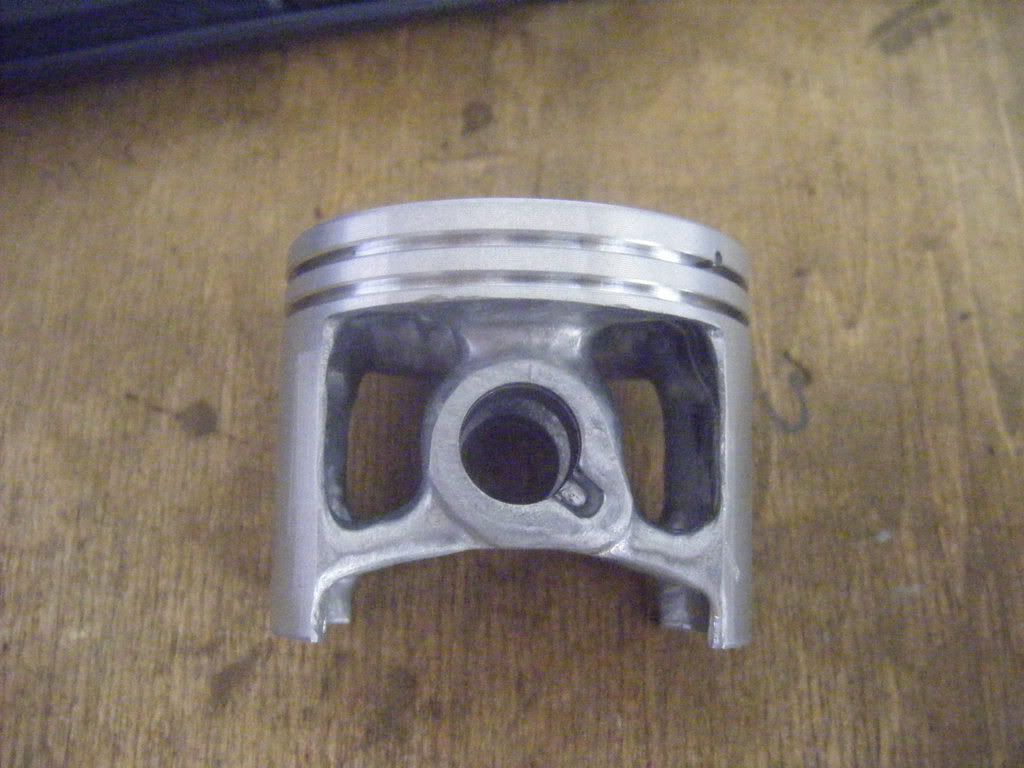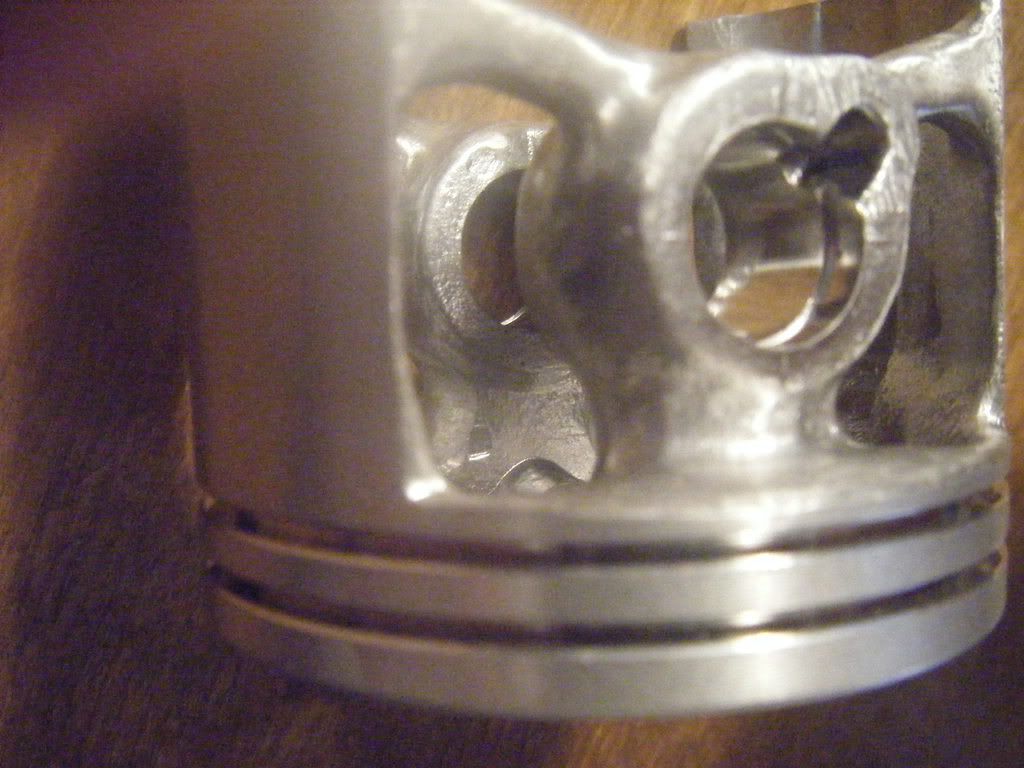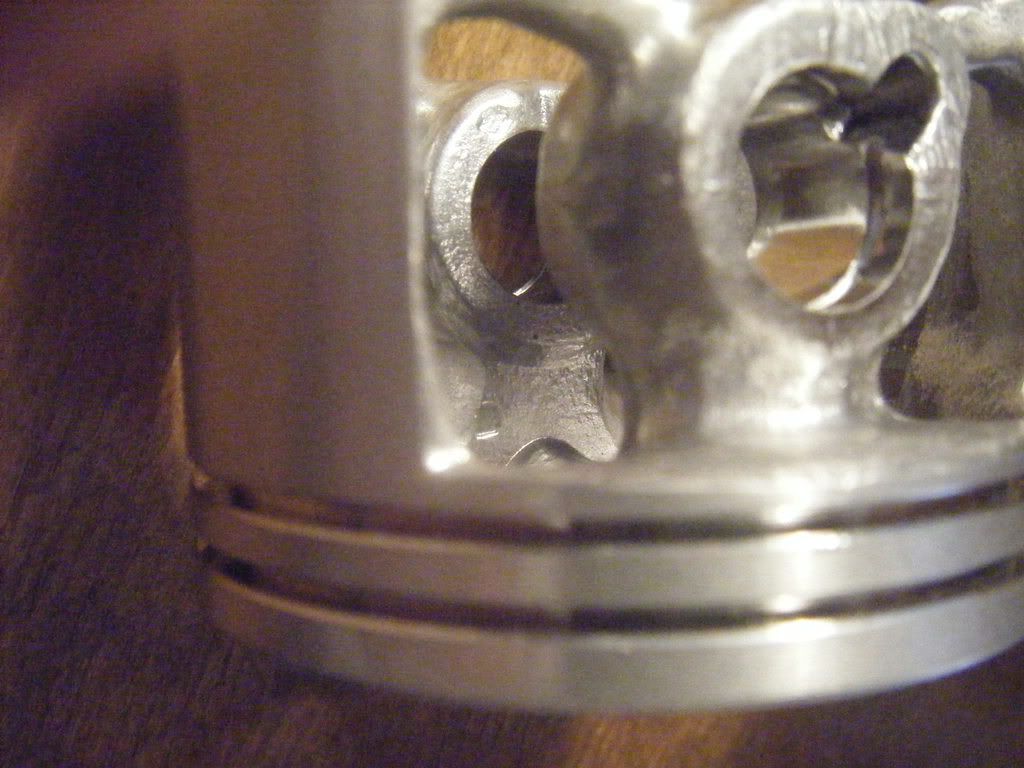There can be a good 1000 lb of force pulling up on the pin boss in some cases, and easily 3000 lb pushing down, Easy enough to take the cross sectional area of the webs and see just how much stress and strain your putting on them.
Fatigue endurance strength of aluminium alloy pistons is in at about 15,000 PSI based on 1x10^9 cycles or about 1500 hours. This is also assuming there are no casting inclusions, cracks or stress risers present.
The meen time before failure will drop very quickly if the fatigue limit is exceeded, it does not work to say, if it will last 1500 hours at 15,000 psi, then it should last 750 hours at 30,000 psi.
To me, the webs look a little small, esp for a work saw where the engine is expected to run for hundreds of hours. The gains from removing those last bits of metal are going to be pretty small and the loss in strength significant.
